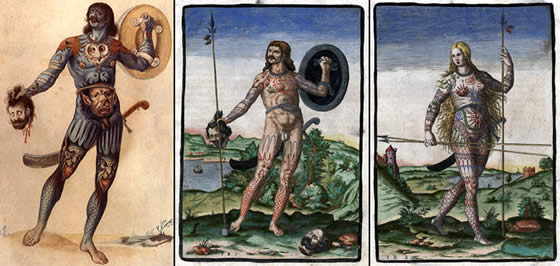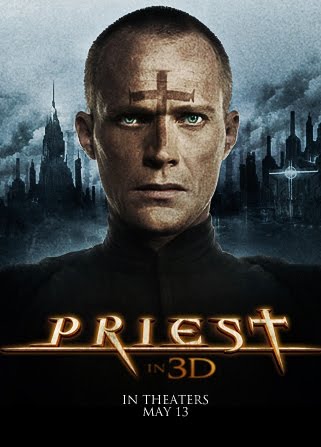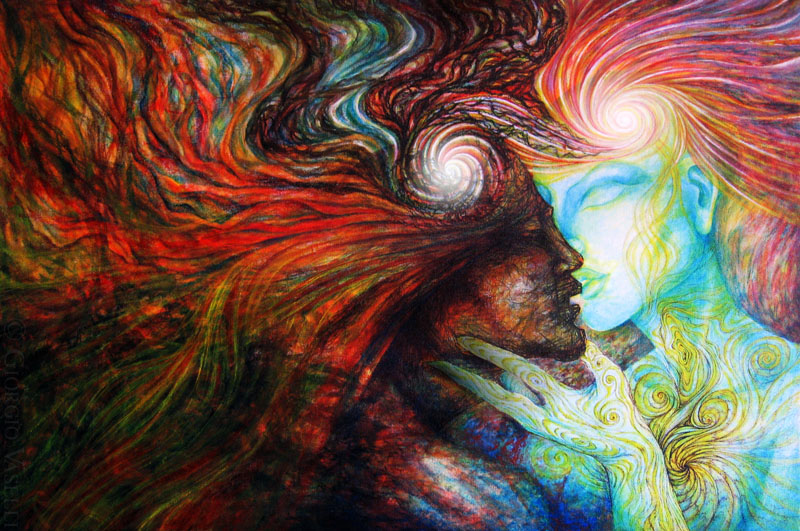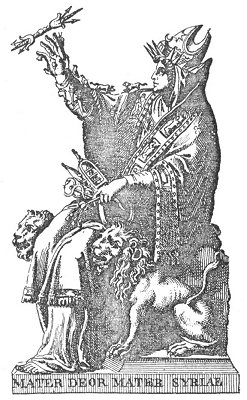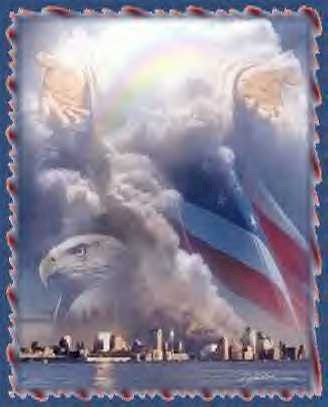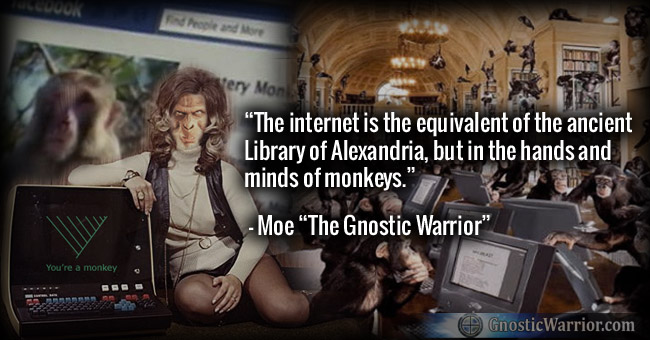Many millions of people today such as myself are mysteriously drawn to the painful art form known of as tattooing, and some of us do not 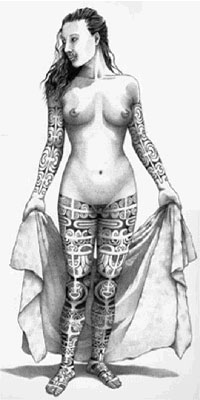 know why. I believe the reason to be a common thread that some of us share to the past. A past that deals with thousands of years of ink, blood, honor and tribal identity.
know why. I believe the reason to be a common thread that some of us share to the past. A past that deals with thousands of years of ink, blood, honor and tribal identity.
An art form, that would actually become a threat to the church in the 4th century when the first Christian emperor of Rome had banned facial tattooing of slaves and prisoners, and later Pope Hadrian in the year 787 who had prohibited all forms of tattooing. More measure would be employed, and in fact, a passage in the bible would be created that would make this age old custom of tattooing now considered a sin; as seen in Leviticus 19:28 –
“Ye shall not make cuttings on your flesh (body) on account of a soul, i.e., a dead person (נפשׁ equals מת נפשׁ, Leviticus 21:11; Numbers 6:6, or מת, Deuteronomy 14:1; so again in Leviticus 22:4; Numbers 5:2; Numbers 9:6-7, Numbers 9:10), nor make engraven (or branded) writing upon yourselves.”
This is why the art of tattooing in the West had really went underground in the last 1,000 plus years, to only reemerge in the last 100 plus years or so. The church had used the written word of the bible and God to virtually ban this ancient art form from the Catholic formed countries of the West. However, with times changing and along with the Catholic Church being more lenient towards human expression and individuality, tattoos have now become more popular than ever all over the world.
Many people are attracted to this type of painful art, but don’t really know why. Some say it is to rebel, to express themselves, or to be different. My theory as to why this is occurring, is that some of the people who are attracted to tattoos today are doing it for the same reason our ancestors had got them, and that many of us may in fact descend from some of these ancient tattooed tribes of the past . Ancient tattooed people who are being discovered all over the world that I will describe to you below in this article.
The reason that some of us are drawn towards tattooing is because of past life memories that is really just “déjà vu.” Déjà vu is a French word meaning “already seen or seen before.” Plato had said that déjà vu is an actual real memory of events that took place in a past life. Therefor, I believe that this art of tattooing that we have an “inner attraction” to, is really a blood born trait and a memory of past lives, simply because of the fact that the sacred art of placing ink on ones skin is one of the oldest customs known to man.
In my last article- Tattoos of the Apocalypse, I had explained that in many tribes no one could tattoo other tribal members except the priests, and the art of tattooing, like their religious customs, were passed down within the same families from one generation to the next. Hence, just like the priesthood was a profession whose teachings were hereditary, so was the marking of one’s skin. This is where I believe déjà vu, DNA, and past life memories play a role in the reason why many of us are attracted to this art form.
The art of tattooing appears to be the common thread that links many tribes and cultures together. A common thread of ink and blood, that appears to come from the same original family tree that left their marks all over the world. These ancient accounts of painted men and tattoos was an art form that was practiced by many tribes around the world, that had included many kings, priests and tribal members.
The custom of tattooing really gained momentum when a dominant class of tattooed rulers from the early Egypt, Lybian, Syrian and Greek royal dynasties had spread this custom around the world in the years spanning from approximately 2100 BC – 800 AD, but also much earlier as well. More well known tribes of these painted people were known in the East as the ancient Greek Sarmatians , Massagetes, Illyrians, Dacians or Thracians, whom the historian Aristotle had said they were the descendants of Cadmus and were also known as the Sparti (the sown men). Body-painting was customary among the Dacians and it was known to have a magical significance in which hereditary symbols were transmitted up to the fourth generation. Also included in these Greek tribes of painted people, on the other side of the world was the royal family of the Uí Néill; this family of Scots were part of the tribe called the “Picts (Picti),” meaning the painted people.
One of the oldest designations of these people comes to us from the Greeks who had named the British Isles, Pretanikai Nesoi, (Pretan(n)ic Isles or Pretan-ik islands) which then later gave their name of the Picts (Picti, Pictavi or Pictones). These Indo-European tribes were described by Caesar who had used the term Pictones and in Welsh literature, they were called the Gwyddyl Ffichti, Goidelic Picts, or Pictish Goidels. Isidore of Saville in 600 AD had said the word Pict in the Scottish language had meant “tattooed,” and he wrote that the Scoti were named in their own tongue from their painting of the body and they were tattooed by means of iron points and ink, with the marking of various figures.
“The Book of Kells” is a MS., written some time in the ninth century is the figure of a naked man whose body is entirely covered with “marks” of various forms.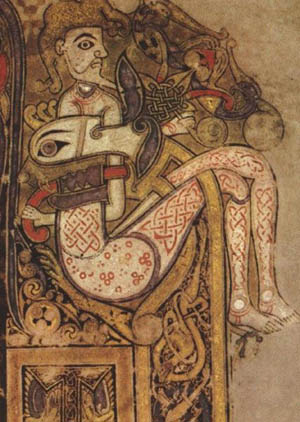
In ancient China, tattoos were associated with criminals since the Zhou Dynasty (1045 BC to 256 BC). In northern India, permanent tattoos are called “”Godna.”” Tattoos have been used as cultural symbols among many tribal populations, as well as the caste-based Hindu population of India. The Māori people of New Zealand practiced a form of tattooing known as Tā moko.
Here is a tattooed woman from Thebes from Dynasty XI (2160-1994 BCE);
The earliest intimations of tattoos come from clay figurines dating to roughly 4000BCE. These female figurines are decorated with dots, dashes and lozenges. This was inconclusive evidence until the discovery and examination of preserved, mummified bodies, whose body designs closely echo the patterns etched on the figurines.Among the best-preserved mummies is that of a woman from Thebes from Dynasty XI (2160-1994 BCE), whose tomb identifies her as Amunet, Priestess of Hathor. Sometimes described as a concubine of Mentuhotep II, tattoo patterns remain clearly visible on her flesh. No amulet designs for Amunet. Instead, she bore parallel lines on her arms and thighs and an elliptical pattern below the navel in the pelvic region.
The oldest mummy ever discovered was Otzi, the Iceman, who is believed to be some 5300 years old. He was found frozen in the mountains along the Austro-Italian border, covered with over 50 different tattoos. (South Tyrol Museum of Archaeology 2001).
More recently, the heavily tattooed 2,500 year old mummified remains of a mysterious young woman, known as the Ukok Princess was found. from the 5th century BCE, found in 1993 in a kurgan of the Pazyryk culture in Republic of Altai, Russia. This tattooed woman is said to have beautifully preserved tattoos and is believed to be from the tribe known as the Pazyryk – a nomadic tribe described in the 5th century BC by the Greek historian Herodotus. This tattooed mummy was among the most significant Russian archaeological findings of the late 20th century.
This is an excerpt from a 2012 article in the Siberian Times, Siberian Princess reveals her 2,500 year old tattoos;
‘Tattoos were used as a mean of personal identification – like a passport now, if you like. The Pazyryks also believed the tattoos would be helpful in another life, making it easy for the people of the same family and culture to find each other after death,’ added Dr Polosmak.
‘Pazyryks repeated the same images of animals in other types of art, which is considered to be like a language of animal images, which represented their thoughts.
‘The same can be said about the tattoos – it was a language of animal imagery, used to express some thoughts and to define one’s position both in society, and in the world. The more tattoos were on the body, the longer it meant the person lived, and the higher was his position.
‘For example the body of one man, which was found earlier in the 20th century, had his entire body covered with tattoos. Our young woman – the princess – has only her two arms tattooed. So they signified both age and status.’
The tattoos on the left shoulder of the ‘princess’ show a fantastical mythological animal: a deer with a griffon’s beak and a Capricorn’s antlers. The antlers are decorated with the heads of griffons. And the same griffon’s head is shown on the back of the animal.
The mouth of a spotted panther with a long tail is seen at the legs of a sheep.
She also has a deer’s head on her wrist, with big antlers. There is a drawing on the animal’s body on a thumb on her left hand.
Another tattooed mummy was found in Peru. This mystery woman was found with a perfectly preserved skull and traditional Moche braids intact.
Deep inside an ancient pyramid in Peru, a mummy lay hidden in a gold-filled tomb. The underground chamber remained a secret for nearly 1,600 years, until an archaeologist noticed rectangular patches of soft clay in the pyramid’s floor—a telltale sign of a grave. His heartbeat quickened. He suspected that someone powerful would be buried here.
The archaeologist was standing in a sacred location, a courtyard near the peak of the biggest pyramid at El Brujo—a ceremonial site of the ancient Moche (MO-chay) people. The civilization’s rulers, who controlled the north coast of Peru from A.D. 100 to 800, probably reserved this spot for a king or a great warrior. What valuable treasures would lie inside this leader’s tomb?

Moe is the founder of GnosticWarrior.com. He is a father, husband, author, martial arts black belt, and an expert in Gnosticism, the occult, and esotericism.



